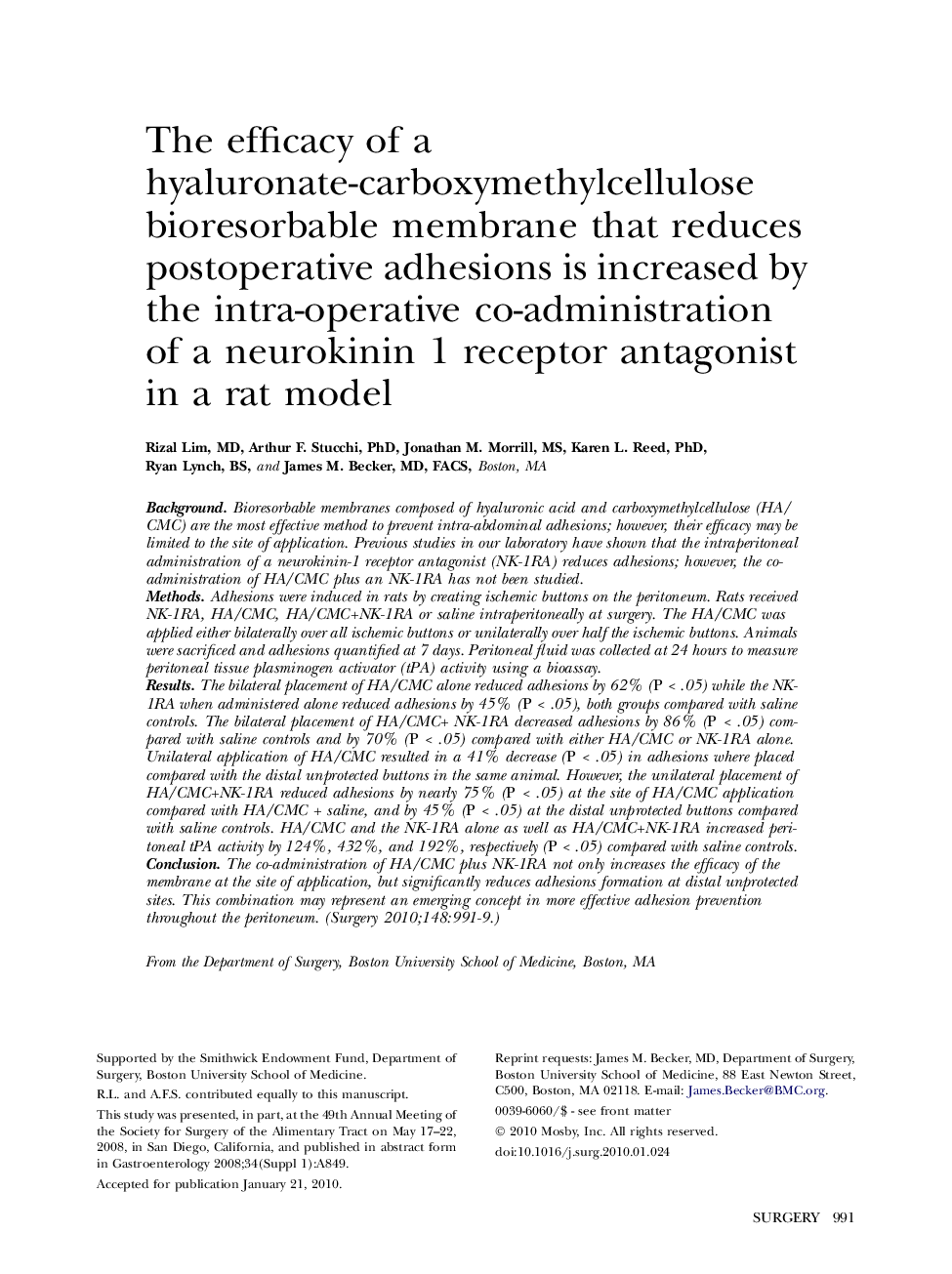| Article ID | Journal | Published Year | Pages | File Type |
|---|---|---|---|---|
| 4308950 | Surgery | 2010 | 9 Pages |
BackgroundBioresorbable membranes composed of hyaluronic acid and carboxymethylcellulose (HA/CMC) are the most effective method to prevent intra-abdominal adhesions; however, their efficacy may be limited to the site of application. Previous studies in our laboratory have shown that the intraperitoneal administration of a neurokinin-1 receptor antagonist (NK-1RA) reduces adhesions; however, the co-administration of HA/CMC plus an NK-1RA has not been studied.MethodsAdhesions were induced in rats by creating ischemic buttons on the peritoneum. Rats received NK-1RA, HA/CMC, HA/CMC+NK-1RA or saline intraperitoneally at surgery. The HA/CMC was applied either bilaterally over all ischemic buttons or unilaterally over half the ischemic buttons. Animals were sacrificed and adhesions quantified at 7 days. Peritoneal fluid was collected at 24 hours to measure peritoneal tissue plasminogen activator (tPA) activity using a bioassay.ResultsThe bilateral placement of HA/CMC alone reduced adhesions by 62% (P < .05) while the NK-1RA when administered alone reduced adhesions by 45% (P < .05), both groups compared with saline controls. The bilateral placement of HA/CMC+ NK-1RA decreased adhesions by 86% (P < .05) compared with saline controls and by 70% (P < .05) compared with either HA/CMC or NK-1RA alone. Unilateral application of HA/CMC resulted in a 41% decrease (P < .05) in adhesions where placed compared with the distal unprotected buttons in the same animal. However, the unilateral placement of HA/CMC+NK-1RA reduced adhesions by nearly 75% (P < .05) at the site of HA/CMC application compared with HA/CMC + saline, and by 45% (P < .05) at the distal unprotected buttons compared with saline controls. HA/CMC and the NK-1RA alone as well as HA/CMC+NK-1RA increased peritoneal tPA activity by 124%, 432%, and 192%, respectively (P < .05) compared with saline controls.ConclusionThe co-administration of HA/CMC plus NK-1RA not only increases the efficacy of the membrane at the site of application, but significantly reduces adhesions formation at distal unprotected sites. This combination may represent an emerging concept in more effective adhesion prevention throughout the peritoneum.
